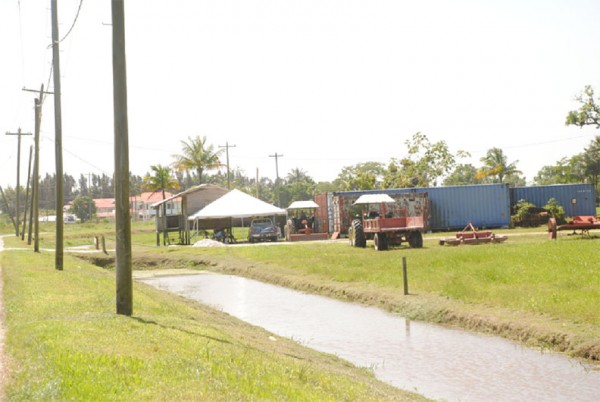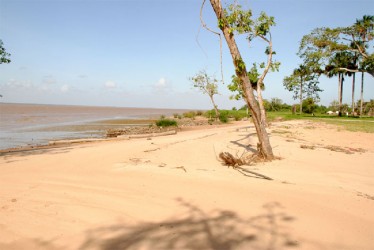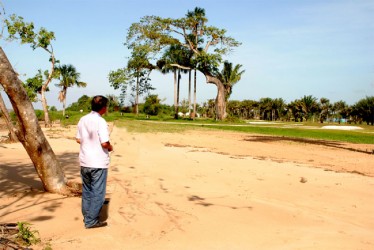In just over five months, one of Guyana’s best-known entrepreneurs will commence the creation of a project that will not only take his business pursuits to another level but will also single him out as an investor with a vision for the longer-term future of Guyana.
Isika, an indigenous word meaning “to give”, is the name of a multi-million-dollar project by businessman Stanley Ming, CEO of Mings Products and Services Ltd (MPS), Guyana’s distributor of a range of Yamaha products including outboard motors, generators, water pumps, water vehicles and motorcycles and Mitsubishi motor vehicles. The company also represents a range of industrial products which include high density polyethylene (HDPE) pipes for drainage and culverts, vinyl sheet piling for revetments and Tensar geogrids for reinforcing the foundations of roads, runways and buildings.

Ming envisages the creation of a community that may well set a significant trend in terms of outward migration from an overcrowded and, these days, far from appealing capital.
Ming has chosen Parika as the locale for the realization of a vision that envisages options for residential as well as business pursuits for those whom, perhaps, may well have grown tired of an urban existence.
The former Queen’s College student and motor racing enthusiast believes that his decision makes both business and family sense and he is equally persuaded that his decision is consistent with a long-held passion for giving back to Guyana.
Ming has recruited the Trinidad and Tobago firm, Newel Lewis Broadbridge Associates (NBLA) to design the envisaged community and to oversee its creation. It will sit on an area comprising approximately 1,100 acres of land across six separate lots ranging in size from 5 acres to 400 acres. The plot closest to Parika is at Bortenstein, and is approximately 2.2 miles away. The plots of land are linked by way of a canal system that connects to sluice gates that empty water into the Essequibo River. The Essequibo River, provides the main access route for the movement of workers, equipment and to interior locations to serve mostly the gold and diamond mining, forestry and tourism sectors. Additionally, the river is the main means of commuting between Parika and the township of Bartica and numerous riverain communities.
When completed, Isika will be more than a new community. Its breathtaking view of the Essequibo River will make it a must see for tourists and it is in this area, Ming says, that an assortment of tastefully designed structures will be erected as homes for sale, rent and recreation.
Before that, however, Isika will host homes for the workers employed by Ming, his family and the workers employed by Mings Products and Services. After that the company complex will be erected. He estimates that both the living quarters and the office complex will be completed by 2017, positioning him to make what would be an historic move of most of his entire 25 year-old business from the capital. He intends to maintain a modest service presence in Georgetown.

The Isika community itself will be completed in phases that will also include an industrial park, recreational facilities, corporate offices, educational facilities, a medical complex and a transportation service that will include an airstrip and a ground transport system.
A project of this nature is almost certain to be attended by delays. Ming says he has had many of those including the long-awaited commencement of a critical road from Parika to Goshen, the completion of which is expected to open up the area for farming and tourism and will also be used as a carriageway for the first leg of miners’ journey to the gold-bearing areas of the interior. Last year, a tender was published by the Guyana Geology and Mines Commission for consultancy services for engineering designs and supervision for the construction of the road. Ming has spent the past two years developing the land and waiting on the road.
The decision by the Guyanese businessman that he would move lock, stock and barrel away from the capital was taken after he had lived through the floods of 2005. After that, he says, he lost faith in the engineering work that attended the rehabilitation of the sea defence structures and drainage along the East Coast Demerara. Flying over Region Three he came to appreciate an area that was not prone to flooding due to its higher elevation as compared to the East Coast Demerara.
Environmental conditions apart, Ming says Region Three provides the option of a larger workforce. He says approximately 40% of the Georgetown workforce comes from Region Three. “I can live a healthier life that is less congested, less polluted and less costly. God willing, I am hoping by 2017 I will be living at Parika and enjoying the healthy environment, cool breeze and the scenic view of the Essequibo River,” he says.

His enthusiasm for relocation is further driven by what he sees as a general drift away from Georgetown to communities such as Tuschen and Parfait Harmonie. It is estimated that on completion the two communities will house approximately 30,000 residents.
Ming’s initial construction is taking place at Blake, about three miles from the Parika Main Road. Travelling to Blake takes one pass small communities like Hyde Park, Grove, Look Out, Naamryck, Salem, Mora, Sparta, Bortenstein and Roden Rust. The majority of persons living in these areas are farmers. Their crops include ground provision, vegetables, and fruits. The farmers sell their produce at Parika to dealers who, in turn, wholesale to vendors at markets throughout Guyana which include Bartica, Stabroek, Bourda and along the entire East Coast, all the way to Corentyne, Berbice. Last weekend several trucks were moving produce—ferried from the various farming communities along the river to the Hubu Koker—to distant destinations.
Sawmilling is the other major economic activity in evidence along the East Bank Essequibo corridor, between Parika and St Lawrence. Over a three-mile distance, a count revealed 16 sawmills. Collectively, the sawmills employ around 500 persons.
Ming believes that his own initiative may well have triggered the surfeit of construction that is now taking place in the area. He is encouraged, believing that on completion, Isika will become a critical source of important services for surrounding communities.

Perhaps there are other unstated reasons for Ming’s decision to relocate. Travelling inland from the Parika Main Road, one could not help but notice the beauty of the newly constructed homes, which rival those in urban locations. The parapets are well groomed and garbage bins can be seen outside most homes which benefit from weekly garbage collection and disposal. Among Guyanese yearning for an improved dwelling environment there is a passionate desire either to remake the capital or to move away from it. Ming is pursuing the second option along with his family and it seems that his employees are buying in to the idea. Others, one suspects, will follow.





